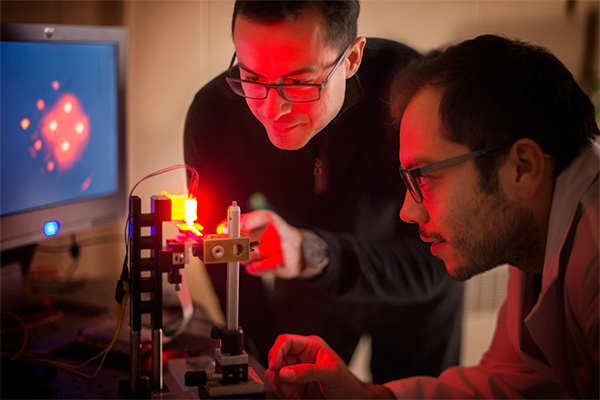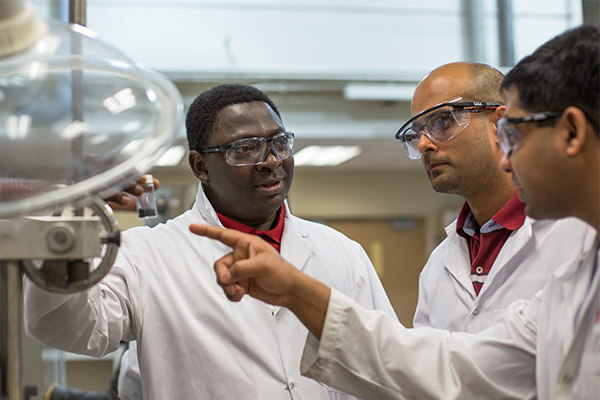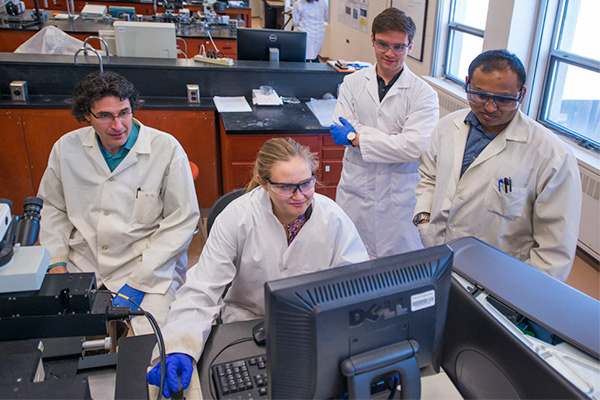Researchers in the Microfluidics, Interfaces, and Electrochemical Engineering Group in the Department of Chemical Engineering focus on the development of nanostructured biosensors, as well as lab-on-a-chip and electrochemical devices. The group’s major research strengths include microfluidics, electrokinetics, nanoplasmonics, electrochemistry, and interfacial and transport phenomena (see Figure 1). Their specific research areas include nanohole arrays, portable sensors, miniaturized energy storage applications (micro-batteries), and directed nanoparticle assembly into functional structures and devices. Emerging strengths include graphenebased technologies and applications, such as super-hydrophobic coatings, electrically conductive graphene/polymer composites, the formulation of graphene inks, the printing of electrochemical energy devices (supercapacitors, battery components), and graphene-based sensors. Members are also developing scalable, “top-down” applications for the production of graphene through graphite exfoliation (see Figure 2).

The recently formed "Graphene Integrated Functional Technologies (GIFT) Research Cluster has begun developing autonomous, graphene-based, wearable sensors and related technologies. Additionally, the newly established QuSENS Lab (see Figure 3) focuses on the development of nano-plasmonic sensors and related sensing applications, capitalizing on the group’s expertise in electrokinetics, nano-structured plasmonic surfaces, optics, and Raman spectroscopy.
Research is supported through funds from the Faculty's Dean’s Research Fund, two Ontario Early Researcher Awards (ERA), the Natural Sciences and Engineering Research Council of Canada (NSERC), the Ontario Centres of Excellence (OCE), Mitacs, and industry (DuPont Canada, Spectra Plasmonics, Grafoid, Alcereco, Eagle Graphite, Avonex, and others).


Researchers in this group: